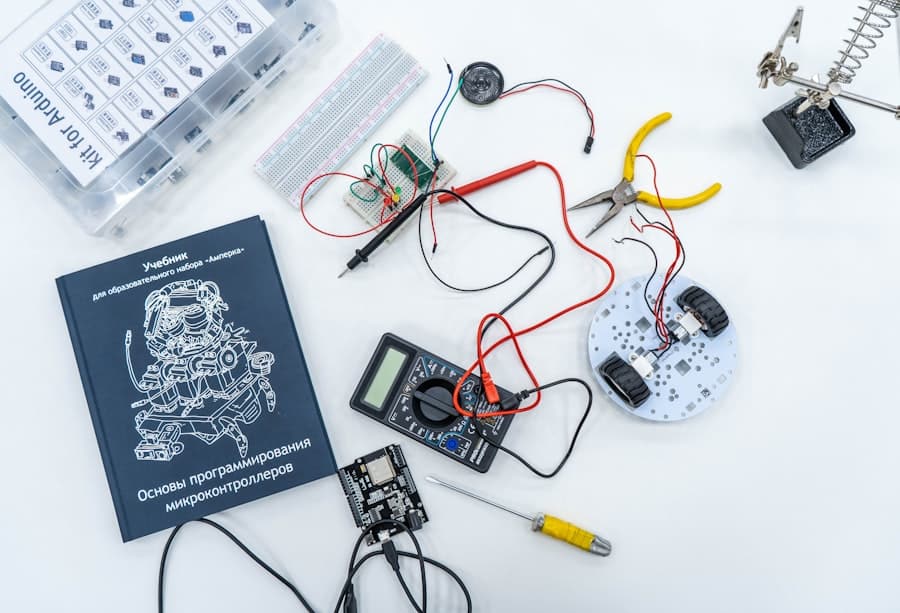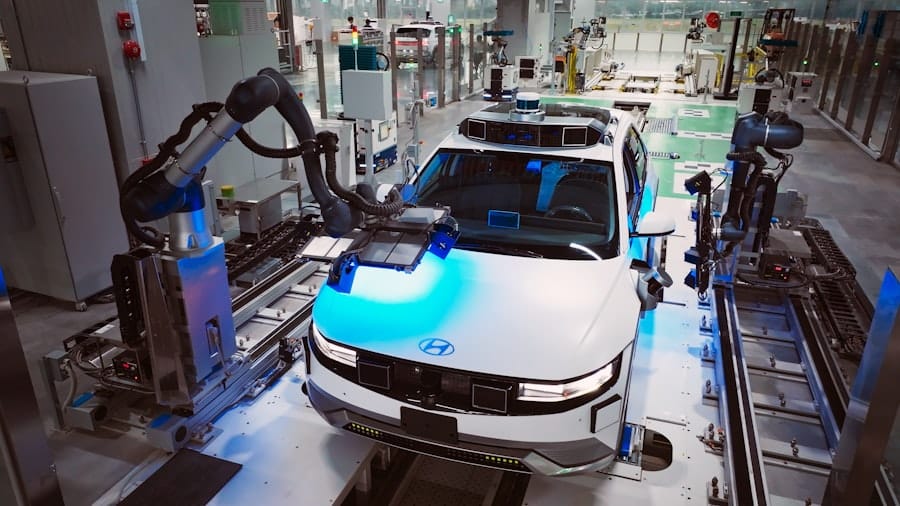The inception of robotics in space exploration can be traced back to the early days of the space race, particularly during the 1960s. The United States and the Soviet Union were engaged in a fierce competition to demonstrate technological superiority, which led to groundbreaking innovations in various fields, including robotics. One of the earliest examples of robotic technology in space was the Soviet Luna program, which successfully deployed robotic landers to the Moon.
Luna 2, launched in 1959, became the first human-made object to reach the Moon, paving the way for subsequent missions that utilized robotic systems to gather data and conduct experiments without the need for human presence. In the United States, NASA’s Mariner program marked a significant milestone in robotic space exploration. Mariner 4, launched in 1964, was the first spacecraft to successfully fly by Mars and send back images of the Martian surface.
This mission not only provided valuable data about Mars but also demonstrated the potential of robotic spacecraft to explore distant celestial bodies. The success of these early missions laid the groundwork for more sophisticated robotic systems, leading to an era where robots would play an integral role in our understanding of the universe.
Key Takeaways
- Robotics has been a part of space exploration since the early days, with the first robotic spacecraft, Luna 2, being launched in 1959.
- Modern space missions heavily rely on robotics for tasks such as satellite deployment, maintenance, and planetary exploration.
- Advancements in robotic technology, such as AI and autonomous navigation, have enabled more complex and efficient space exploration missions.
- Robotics has had a significant impact on human space exploration by performing tasks too dangerous or difficult for humans, such as spacewalks and sample collection.
- Despite advancements, challenges and limitations in robotic exploration in space still exist, including communication delays and the need for more advanced AI and autonomy.
- The future of robotics in space exploration looks promising, with plans for more advanced robotic missions to explore distant planets and moons.
- Ethical considerations in the use of robotics in space include the potential for contamination of other planets and moons with Earth organisms.
- Collaborative efforts in robotics for space exploration involve partnerships between space agencies, research institutions, and private companies to develop and deploy robotic technologies for space missions.
The Role of Robotics in Modern Space Missions
In contemporary space exploration, robotics has become indispensable, serving a multitude of functions that enhance mission capabilities and safety. Robotic spacecraft are now routinely employed for planetary exploration, satellite deployment, and even servicing missions to the International Space Station (ISS). For instance, NASA’s Mars rovers, such as Curiosity and Perseverance, are equipped with advanced robotic arms and scientific instruments that allow them to analyze soil samples, capture high-resolution images, and conduct experiments on the Martian surface.
These rovers operate autonomously and can navigate complex terrains, showcasing the remarkable advancements in robotic technology. Moreover, robotics plays a crucial role in satellite operations. Satellites equipped with robotic arms can perform maintenance tasks in orbit, such as repairing or upgrading components without requiring human intervention.
The European Space Agency’s (ESA) Active Debris Removal mission aims to utilize robotic systems to capture and deorbit defunct satellites, addressing the growing issue of space debris. This capability not only extends the lifespan of operational satellites but also contributes to the sustainability of space activities.
Advancements in Robotic Technology for Space Exploration

The evolution of robotic technology has been marked by significant advancements that have expanded the scope and effectiveness of space exploration missions. One notable development is the integration of artificial intelligence (AI) into robotic systems. AI enables robots to process vast amounts of data in real-time, make autonomous decisions, and adapt to unforeseen circumstances.
For example, NASA’s Perseverance rover employs AI algorithms to identify and select rock samples for analysis, optimizing its scientific output while minimizing the need for direct human control. Another area of advancement is in mobility and dexterity. Modern rovers are designed with sophisticated locomotion systems that allow them to traverse challenging terrains, such as steep slopes and rocky surfaces.
The use of advanced materials and engineering techniques has resulted in lighter and more resilient robots capable of withstanding harsh environmental conditions. The development of soft robotics is also noteworthy; these robots can manipulate delicate objects and navigate through confined spaces, making them ideal for tasks such as sample collection on other planets.
The Impact of Robotics on Human Space Exploration
Robotics has significantly transformed human space exploration by enhancing safety and efficiency. Robotic systems are often deployed as precursors to human missions, conducting reconnaissance and gathering critical data about potential landing sites. For instance, before astronauts set foot on Mars, robotic missions like the Mars Reconnaissance Orbiter have mapped the planet’s surface and identified areas of interest for future exploration.
This information is invaluable for mission planning and risk assessment.
Robotic arms on the ISS assist astronauts during maintenance tasks, allowing them to focus on complex operations while reducing their exposure to potential hazards.
The Canadarm2, a robotic arm on the ISS, has been instrumental in capturing visiting spacecraft and performing repairs outside the station. This collaboration between humans and robots not only enhances operational efficiency but also ensures that astronauts can conduct their work safely in a challenging environment.
Challenges and Limitations of Robotic Exploration in Space
Despite the remarkable achievements of robotics in space exploration, several challenges and limitations persist. One significant hurdle is communication latency, particularly for missions beyond low Earth orbit. For example, when sending commands to a rover on Mars, there is a delay of several minutes due to the vast distance between Earth and Mars.
This latency complicates real-time decision-making and necessitates a high degree of autonomy in robotic systems. Engineers must design robots capable of operating independently for extended periods while still ensuring they can receive updates or instructions from mission control. Another challenge lies in the harsh conditions of space environments.
Extreme temperatures, radiation exposure, and micrometeoroid impacts pose significant risks to robotic systems. For instance, rovers must be equipped with robust shielding to protect sensitive electronics from radiation while maintaining functionality in extreme cold or heat. Additionally, dust accumulation on solar panels can hinder energy production for rovers operating on planetary surfaces like Mars.
Engineers continuously seek innovative solutions to mitigate these challenges while ensuring that robotic systems remain operational over long durations.
Future Prospects of Robotics in Space Exploration

The future of robotics in space exploration is poised for exciting developments as technology continues to advance at an unprecedented pace. One promising area is the potential for autonomous robotic systems capable of conducting complex missions without direct human oversight. As AI algorithms become more sophisticated, robots may be able to make real-time decisions based on environmental conditions and mission objectives.
This autonomy could enable more ambitious exploration missions, such as establishing permanent bases on the Moon or Mars. Additionally, advancements in materials science may lead to the development of self-repairing robots that can autonomously address mechanical failures during missions. Such capabilities would significantly enhance mission longevity and reduce reliance on resupply missions from Earth.
Furthermore, collaborative robotics—where multiple robots work together—could revolutionize construction efforts on other celestial bodies. For instance, swarms of small robots could work collectively to build habitats or infrastructure on Mars using local materials.
Ethical Considerations in the Use of Robotics in Space
As robotics becomes increasingly integral to space exploration, ethical considerations surrounding their use must be addressed. One primary concern is the potential impact on planetary protection protocols. The introduction of robotic systems raises questions about contamination risks to extraterrestrial environments and whether we are adequately safeguarding these ecosystems from Earth-based microbes.
Ensuring that robotic missions adhere to strict sterilization protocols is essential to prevent unintended consequences that could compromise scientific integrity. Moreover, as we develop more advanced AI-driven robots capable of autonomous decision-making, ethical dilemmas regarding accountability arise. In scenarios where a robot makes a decision that leads to unintended consequences—such as damaging a valuable scientific site—determining responsibility becomes complex.
Establishing clear guidelines for ethical behavior in robotic systems will be crucial as we navigate these challenges in future missions.
Collaborative Efforts in Robotics for Space Exploration
Collaboration among international space agencies and private companies is vital for advancing robotics in space exploration. Initiatives like the Artemis program exemplify this collaborative spirit as NASA partners with ESA, JAXA (Japan Aerospace Exploration Agency), and other organizations to return humans to the Moon by 2024 while utilizing advanced robotic technologies for lunar exploration. Such partnerships leverage diverse expertise and resources, fostering innovation that benefits all parties involved.
Private companies are also playing an increasingly prominent role in developing robotic technologies for space exploration. Companies like SpaceX and Blue Origin are pioneering reusable rocket technology while exploring opportunities for robotic lunar landers and Martian habitats. These collaborations between government agencies and private enterprises not only accelerate technological advancements but also democratize access to space exploration initiatives.
In conclusion, robotics has fundamentally transformed our approach to space exploration since its inception during the early days of the space race. From pioneering missions that laid the groundwork for future endeavors to modern advancements that enhance our capabilities today, robotics continues to shape our understanding of the universe while addressing challenges inherent in exploring distant worlds. As we look ahead, ongoing collaboration among international partners and private enterprises will be essential for unlocking new frontiers in space exploration through innovative robotic technologies.
In the ever-evolving field of space exploration, robotics plays a pivotal role in advancing our understanding of the cosmos. An interesting related article that delves into the technological advancements influencing various sectors, including space exploration, can be found in the discussion of current trends on YouTube. This article highlights how digital platforms are increasingly showcasing innovations in robotics and space technology, making these complex topics more accessible to the public. For more insights, you can read the full article on top trends by visiting com/top-trends-on-youtube-2023/’>this link.
FAQs
What is robotics in the context of space exploration?
Robotics in the context of space exploration refers to the use of robotic systems and technologies to perform tasks and gather data in space. These systems can be used for a variety of purposes, including planetary exploration, satellite maintenance, and space station assembly.
How have robotics contributed to space exploration?
Robotics have significantly contributed to space exploration by enabling the exploration of distant planets, the maintenance of satellites and space stations, and the collection of data in environments that are hazardous to humans. Robotic systems have also played a crucial role in advancing our understanding of the universe and in paving the way for future human space exploration missions.
What are some examples of robotic systems used in space exploration?
Some examples of robotic systems used in space exploration include rovers, robotic arms, autonomous spacecraft, and robotic probes. These systems are designed to withstand the harsh conditions of space and to perform specific tasks such as collecting samples, conducting experiments, and navigating challenging terrain.
What are the challenges of using robotics in space exploration?
Some of the challenges of using robotics in space exploration include the need for reliable communication and control systems, the development of robust and durable hardware, and the ability to operate in extreme environments with limited human intervention. Additionally, the design and deployment of robotic systems for space exploration require careful consideration of factors such as power supply, mobility, and data transmission.
What is the future of robotics in space exploration?
The future of robotics in space exploration is promising, with ongoing advancements in technology and the increasing interest in exploring new frontiers in space. Robotic systems are expected to play a key role in upcoming missions to Mars, the Moon, and beyond, as well as in the development of infrastructure for human space exploration. Additionally, the continued development of artificial intelligence and autonomous systems is likely to further enhance the capabilities of robotics in space exploration.

